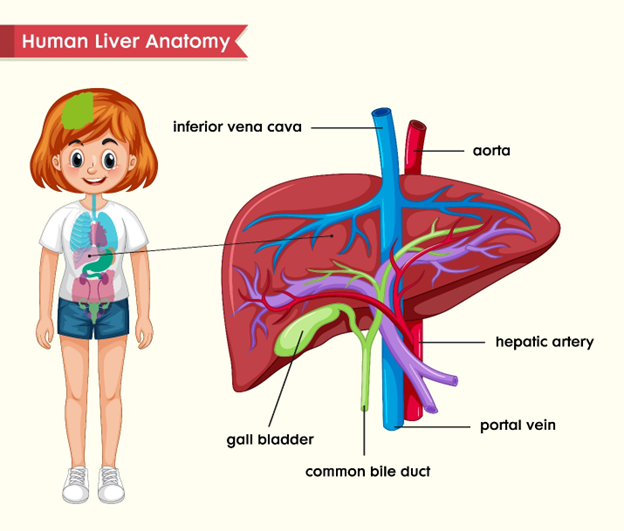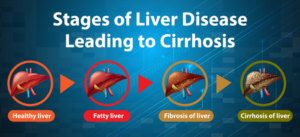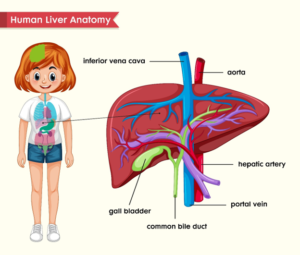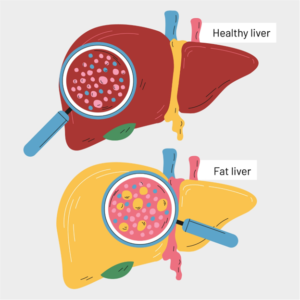
18 Aug Liver Function Test : Everything You Need to Know About It
Liver Function Test : Everything You Need to Know About It

Your liver plays a silent yet powerful role in keeping you healthy. It is one of your body’s most productive organs, performing everything from food digestion to toxin removal and energy storage. However, how can you tell if your liver is functioning properly? An LFT, or liver function test, can help with that.
This blog will provide simple understandable explanations of what an LFT is, why it matters, and what the results may show, regardless of whether your doctor has recommended this test or you are simply interested in preventive health examinations.
What Is a Liver Function Test (LFT)?

A Liver Function Test is a blood test that checks how well your liver is working. It doesn’t test just one thing — it’s actually a group of tests that measure different proteins, enzymes, and substances your liver produces or processes.
These markers give doctors important clues about whether your liver is healthy, mildly inflamed, or damaged due to illness, medications, or lifestyle factors.
Why Is the Liver So Important?
Before we dive deeper into the test, it’s important to know why the liver’s role in the body is so critical. Here’s what your liver helps you do every day:
- Processes nutrients from food and converts them into energy
- Breaks down medications and toxins from your bloodstream
- Produces bile, which helps digest fats
- Creates proteins needed for blood clotting and other vital functions
- Stores vitamins, iron, and sugars for future energy use

Your liver works quietly in the background, and often, symptoms of liver damage don’t appear until things are serious. That’s why liver function tests are an important part of preventive health.
Why Would You Need an LFT?
Doctors may recommend a liver function test for a wide range of reasons. You may need one if:
- You show symptoms of liver issues, like yellowing of the skin (jaundice), fatigue, dark-colored urine, or bloating
- You’ve had exposure to hepatitis viruses (Hep A, B, or C)
- You consume alcohol regularly
- You’re on long-term medication that can impact the liver
- You have obesity, diabetes, or high cholesterol, all of which increase liver strain
- You’re getting a routine health screening after age 35
- Your family has a history of liver disease or fatty liver
In many cases, LFTs are also done as a part of pre-surgical assessments or annual health packages.
What Does an LFT Actually Measure?
An LFT checks several indicators that reflect liver health. Each one tells a different story. Here’s what’s usually tested:
1.ALT (Alanine Aminotransferase)
This is an enzyme mostly found in the liver. When liver cells are damaged, they release ALT into the blood. High ALT levels can indicate hepatitis, fatty liver, or liver inflammation.
2.AST (Aspartate Aminotransferase)
This enzyme is present in the liver, heart, and muscles. Elevated AST may suggest liver injury, but also points to muscle damage, so it’s interpreted along with other values.
3.ALP (Alkaline Phosphatase)
This enzyme is linked to bile ducts, and is also found in bones. High ALP levels can signal blockages in bile flow, gallstones, or bone disorders.
4.Bilirubin (Total, Direct, and Indirect)
Your body produces bilirubin as a waste product when it breaks down old red blood cells. It is processed and eliminated by a healthy liver. High bilirubin leads to jaundice, which causes yellow skin and eyes — often a visible sign of liver trouble.
5.Albumin and Total Protein
Proteins like albumin, which are produced by the liver, help in nutrient transportation and fluid balance. Low albumin levels can indicate insufficient liver production, which is frequently brought on by malnutrition or chronic liver disease.
6.A/G Ratio
A/G Ratio compares the amount of albumin to globulin proteins in your blood. A healthy liver keeps this ratio balanced, usually between 1.5 and 2.5. An abnormal A/G ratio can indicate liver disease, kidney problems, or immune disorders, and helps doctors pinpoint the cause of abnormal protein levels.
7. Gamma-glutamyl Transferase (GGT)
This enzyme aids in the detection of bile duct abnormalities and may increase as a result of excessive alcohol intake or the use of specific drugs.
Common Symptoms That Indicate Liver Problems
Although there may not be any symptoms of early liver damage, the following warning signs should never be ignored:
- Yellowing of skin or eyes (jaundice)
- Fatigue and weakness
- Pain or heaviness in the upper right abdomen
- Dark urine and pale-colored stool
- Swelling in the legs or abdomen
- Loss of appetite or unexplained weight loss
- Constant nausea or vomiting
- Itchy skin
If you observe any of these, you should speak with your doctor and get an LFT done at the earliest.
What Can Cause Abnormal LFT Results?
Abnormal liver function test results don’t always mean you have liver disease. Sometimes, mild variations can be caused by temporary conditions or even strenuous exercise. However, constantly high values may point to:
- Viral hepatitis (A, B, or C)
- Fatty liver disease, often due to obesity or high sugar/fat intake
- Alcoholic liver disease
- Cirrhosis (scarring of liver tissue)
- Liver tumors or cysts
- Autoimmune liver disorders
- Drug-induced liver damage (due to painkillers, antibiotics, or steroids)
- Genetic conditions like Wilson’s disease or hemochromatosis
The test itself is only the starting point. Your doctor may recommend more tests like an ultrasound, fibroscan, or MRI to understand the root cause.
How Is the LFT Performed?
The procedure is simple and takes just a few minutes. Here’s what happens:
- A technician draws a small sample of blood, usually from a vein in your arm.
- In some cases, fasting for 8–10 hours may be advised, but not always.
- You can resume normal activities immediately after.
Most labs, including ours, provide same-day reports, which are reviewed by doctors for interpretation.
How to Keep Your Liver Healthy: Everyday Tips
Your lifestyle determines your long-term liver health, even though tests can help monitor liver function. Here’s how to maintain the health of your liver:
✅ Eat a balanced diet rich in vegetables, fruits, lean proteins, and whole grains
✅ Limit intake of alcohol or avoid it entirely
✅ Exercise regularly, especially if you’re overweight
✅ Stay hydrated to support detox functions
✅ Avoid self-medication — especially painkillers, antibiotics, and herbal supplements
✅ Get vaccinated against hepatitis A and B if you are at risk
✅ Avoid exposure to contaminated needles, blood, or unscreened transfusions
Taking care of your liver today can prevent serious complications in the future — including cirrhosis, liver failure, or even liver cancer.
Conclusion: A Small Test with Big Impact
A Liver Function Test is more than just a routine blood check — it’s a window into your body’s filtration system. Whether it’s done because of a specific concern or as part of a preventive check-up, it plays a key role in detecting liver problems early, often before symptoms appear.
Don’t wait for signs to show up. Taking a proactive step toward liver health can make all the difference in the long run.
At Vision Diagnostic Centre LLP, we provide accurate and affordable LFTs with fast reporting — helping you stay informed, empowered, and in control of your health.


No Comments